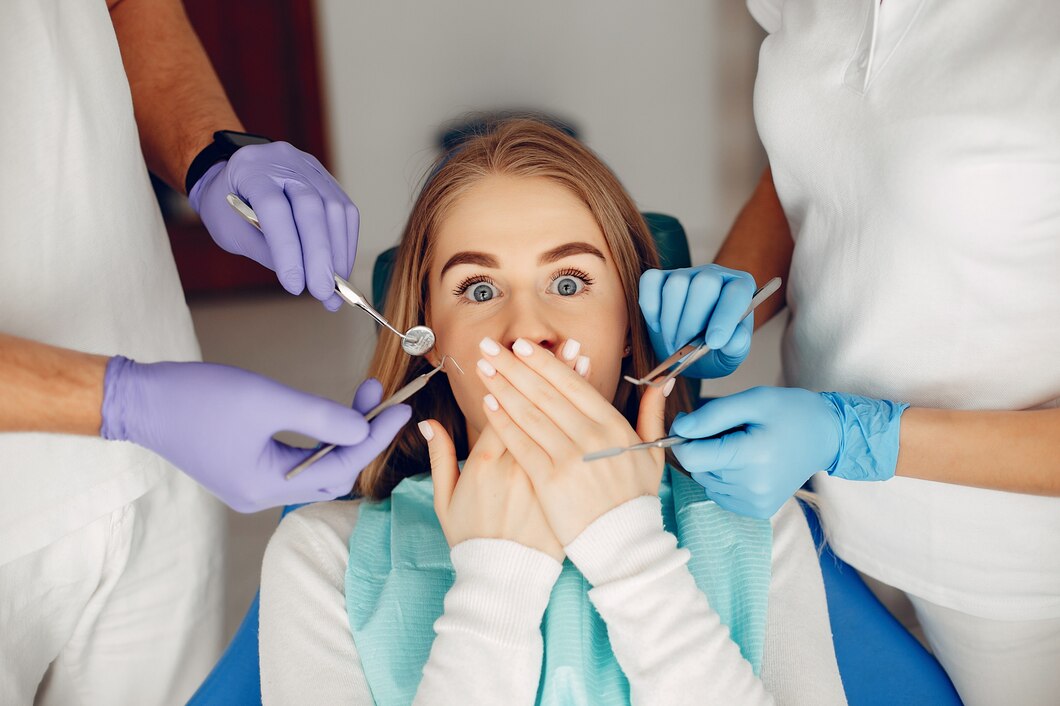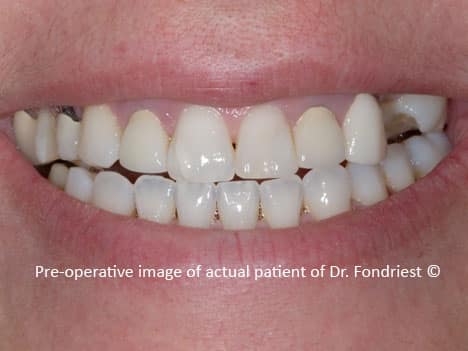Black Spot On Gum

A black spot on the gum can be a cause for concern, as it may indicate an underlying oral health issue. The gums, also known as the gingiva, play a crucial role in maintaining the overall health of the mouth. They surround the teeth, providing a seal that prevents bacteria and other harmful substances from accumulating in the spaces between the teeth and the gums.
One of the primary reasons for a black spot on the gum is the accumulation of melanin, the pigment responsible for skin and hair color. Melanin can sometimes accumulate in the gums, resulting in the formation of black spots or patches. This condition is known as oral melanin pigmentation or oral melanosis.
Another possible cause of a black spot on the gum is the formation of a blood clot or hematoma. This can occur due to trauma or injury to the gum tissue, causing blood to accumulate and form a clot. The clot may appear as a black spot or patch on the gum.
Smoking and tobacco use are also known to cause black spots on the gums. The chemicals present in tobacco products can cause the gums to become discolored, leading to the formation of black spots or patches.
In some cases, a black spot on the gum may be a sign of a more serious underlying condition, such as oral cancer. Although rare, oral cancer can cause the formation of black spots or patches on the gums, tongue, or other parts of the mouth.
It is essential to consult a dentist or oral healthcare professional if you notice a black spot on your gum. They will be able to examine the spot and determine the underlying cause. In some cases, the spot may be harmless and require no treatment. However, if the spot is caused by an underlying condition, prompt treatment can help prevent further complications.
Causes of Black Spots on Gums
- Melanin accumulation: Melanin can accumulate in the gums, causing black spots or patches to form.
- Blood clot or hematoma: Trauma or injury to the gum tissue can cause blood to accumulate and form a clot, appearing as a black spot or patch.
- Smoking and tobacco use: The chemicals present in tobacco products can cause the gums to become discolored, leading to the formation of black spots or patches.
- Oral cancer: In rare cases, a black spot on the gum may be a sign of oral cancer.
Symptoms of Black Spots on Gums
- Discoloration: The gums may appear black, brown, or gray due to the accumulation of melanin or other substances.
- Pain or discomfort: The black spot may be painful or sensitive to the touch, especially if it is caused by a blood clot or hematoma.
- Bleeding: The gums may bleed easily, especially if the black spot is caused by a blood clot or hematoma.
- Swelling: The gums may become swollen or inflamed, especially if the black spot is caused by an underlying condition such as oral cancer.
Diagnosis of Black Spots on Gums
A dentist or oral healthcare professional will typically diagnose a black spot on the gum by performing a visual examination and taking a thorough medical history. They may also use specialized instruments, such as a periodontal probe, to examine the gums and surrounding tissues.
In some cases, a biopsy may be necessary to determine the underlying cause of the black spot. A biopsy involves removing a small sample of tissue from the affected area and examining it under a microscope.
Treatment of Black Spots on Gums
The treatment for a black spot on the gum will depend on the underlying cause. In some cases, the spot may be harmless and require no treatment. However, if the spot is caused by an underlying condition, prompt treatment can help prevent further complications.
- Melanin accumulation: In some cases, the black spot may be removed using a laser or other specialized instrument.
- Blood clot or hematoma: The blood clot or hematoma may be removed using a surgical procedure or other specialized instrument.
- Smoking and tobacco use: Quitting smoking and tobacco use can help prevent further discoloration of the gums.
- Oral cancer: Treatment for oral cancer will depend on the stage and severity of the disease. It may involve surgery, radiation therapy, or other treatments.
What causes black spots on the gums?
+Black spots on the gums can be caused by the accumulation of melanin, the formation of a blood clot or hematoma, smoking and tobacco use, or oral cancer.
How are black spots on the gums diagnosed?
+A dentist or oral healthcare professional will typically diagnose a black spot on the gum by performing a visual examination and taking a thorough medical history. They may also use specialized instruments, such as a periodontal probe, to examine the gums and surrounding tissues.
How are black spots on the gums treated?
+The treatment for a black spot on the gum will depend on the underlying cause. In some cases, the spot may be harmless and require no treatment. However, if the spot is caused by an underlying condition, prompt treatment can help prevent further complications.
In conclusion, a black spot on the gum can be a cause for concern, as it may indicate an underlying oral health issue. It is essential to consult a dentist or oral healthcare professional if you notice a black spot on your gum. They will be able to examine the spot and determine the underlying cause, providing appropriate treatment to prevent further complications.
By understanding the causes, symptoms, diagnosis, and treatment of black spots on the gums, individuals can take proactive steps to maintain their oral health and prevent complications. Regular dental check-ups and good oral hygiene practices, such as brushing and flossing, can help prevent the formation of black spots on the gums.
Additionally, quitting smoking and tobacco use can help prevent further discoloration of the gums. By taking these steps, individuals can help ensure their oral health and prevent complications associated with black spots on the gums.
In the future, advances in dental technology and research may lead to new treatments and prevention methods for black spots on the gums. For example, the use of lasers and other specialized instruments may become more widespread, allowing for more effective and minimally invasive treatments.
Furthermore, the development of new oral health products and technologies may help prevent the formation of black spots on the gums. For example, the use of antimicrobial mouthwashes and toothpastes may help reduce the risk of oral infections and gum disease.
Overall, the key to maintaining good oral health and preventing complications associated with black spots on the gums is to practice good oral hygiene, regular dental check-ups, and a healthy lifestyle. By taking these steps, individuals can help ensure their oral health and prevent complications associated with black spots on the gums.
It's also important to note that some black spots on the gums may be harmless and require no treatment. However, if you notice a black spot on your gum, it's essential to consult a dentist or oral healthcare professional to determine the underlying cause and receive appropriate treatment.
In the context of oral health, it’s essential to consider the broader implications of black spots on the gums. For example, the formation of black spots on the gums may be a sign of underlying systemic health issues, such as diabetes or cardiovascular disease.
By addressing these underlying health issues, individuals can help prevent further complications and maintain their overall health. Additionally, the use of advanced diagnostic technologies, such as oral cancer screening, may help identify potential health issues early on, allowing for prompt treatment and prevention of complications.
Ultimately, the key to maintaining good oral health and preventing complications associated with black spots on the gums is to practice good oral hygiene, regular dental check-ups, and a healthy lifestyle. By taking these steps, individuals can help ensure their oral health and prevent complications associated with black spots on the gums.
| Cause | Symptoms | Treatment |
|---|---|---|
| Melanin accumulation | Discoloration, pain or discomfort | Laser removal, surgical procedure |
| Blood clot or hematoma | Pain or discomfort, bleeding, swelling | Surgical procedure, removal of blood clot or hematoma |
| Smoking and tobacco use | Discoloration, pain or discomfort | Quitting smoking and tobacco use, oral hygiene practices |
| Oral cancer | Discoloration, pain or discomfort, bleeding, swelling | Surgery, radiation therapy, chemotherapy |

By understanding the causes, symptoms, diagnosis, and treatment of black spots on the gums, individuals can take proactive steps to maintain their oral health and prevent complications. Regular dental check-ups and good oral hygiene practices, such as brushing and flossing, can help prevent the formation of black spots on the gums.
Additionally, quitting smoking and tobacco use can help prevent further discoloration of the gums. By taking these steps, individuals can help ensure their oral health and prevent complications associated with black spots on the gums.
In the future, advances in dental technology and research may lead to new treatments and prevention methods for black spots on the gums. For example, the use of lasers and other specialized instruments may become more widespread, allowing for more effective and minimally invasive treatments.
Furthermore, the development of new oral health products and technologies may help prevent the formation of black spots on the gums. For example, the use of antimicrobial mouthwashes and toothpastes may help reduce the risk of oral infections and gum disease.
Overall, the key to maintaining good oral health and preventing complications associated with black spots on the gums is to practice good oral hygiene, regular dental check-ups, and a healthy lifestyle. By taking these steps, individuals can help ensure their oral health and prevent complications associated with black spots on the gums.